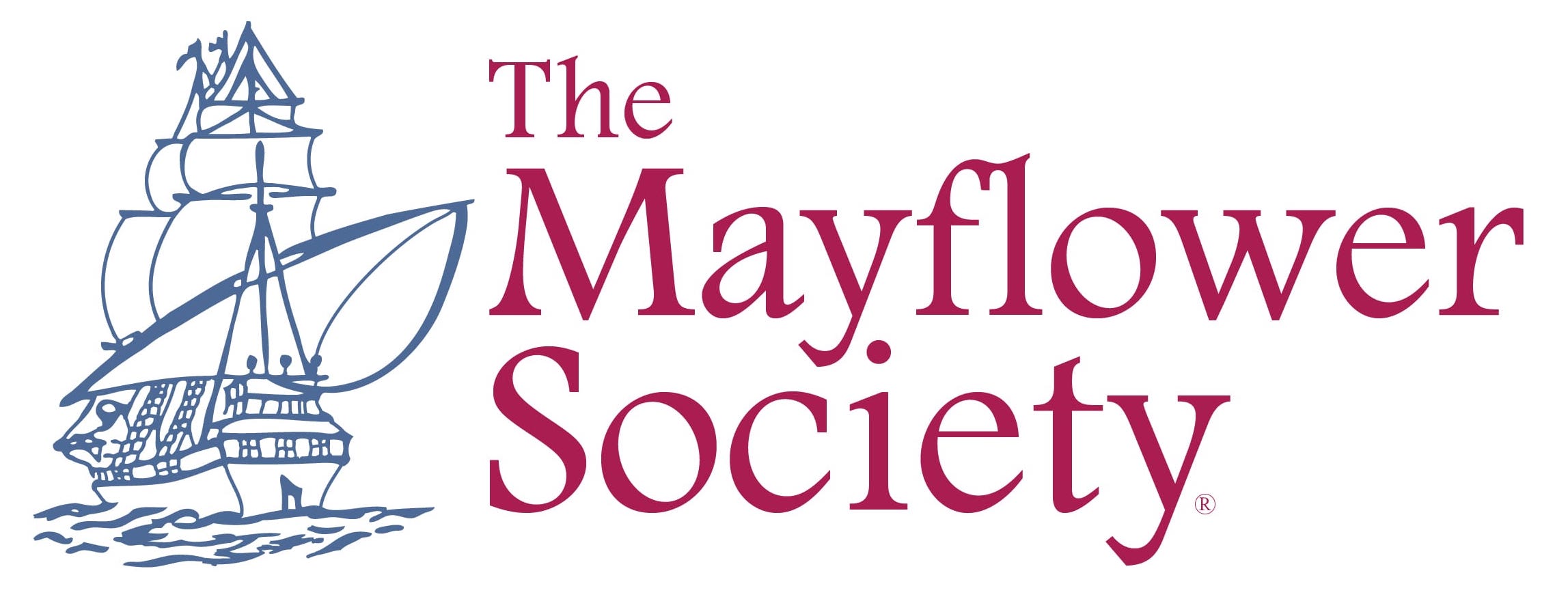Thanksgiving Food/Recipes
The Thanksgiving Meal
One of the most recognizable elements of the Thanksgiving holiday is the Thanksgiving meal. The tradition of having a large meal with family and friends goes all the way back to the celebration in 1621 known as “The First Thanksgiving.” However, Edward Winslow only mentions two foods in the description of the event, fowl and deer. There were certainly other things which were eaten during the three day long feast but we do not know specifically what they were. As the holiday began to spread across the country, regional foods were added and dropped until what we think of as a traditional Thanksgiving meal; turkey, stuffing, cranberry sauce, mashed potatoes, pies etc, became the standard fare.
While we might not know for certain what was served alongside the fowl and venison in 1621, you can try out these 17th century recipes at your Thanksgiving table:Stewed Pompion (Squash)
There are very few actual recipes that survive from early New England, but this account of stewed pompion (squash) is one of them. Only crab apples are native to the Americas, so the splash of vinegar in this recipe which gives the squash tartness would have been a welcome taste of home for early colonists.
The Ancient New England Standing Dish
“But the Housewives manner is to slice them when ripe, and cut them into dice, and so fill a pot with them of two or three Gallons, and stew them upon a gentle fire a whole day, and as they sink, they fill again with fresh Pompions, not putting any liquor to them; and when it is stew’d enough, it will look like bak’d Apples; this they Dish, putting Butter to it, and a little Vinegar, (with some Spice, as Ginger, &c.) which makes it tart like an Apple, and so serve it up to be eaten with Fish or Flesh: It provokes Urin extreamly and is very windy.”
- John Josselyn, New-Englands Rarities Discovered
Makes 3-4 servings.
Ingredients:
- 3 pounds of any fleshy squash, such as acorn, butternut or hubbard cut into chunks
- 1 ½ cup water, more if necessary
- 2 tablespoons unsalted butter
- ¼ cup apple cider vinegar
- ⅛ teaspoon ground cloves
- 1 teaspoon ground ginger
- ½ teaspoon ground cinnamon
- ¼ teaspoon salt
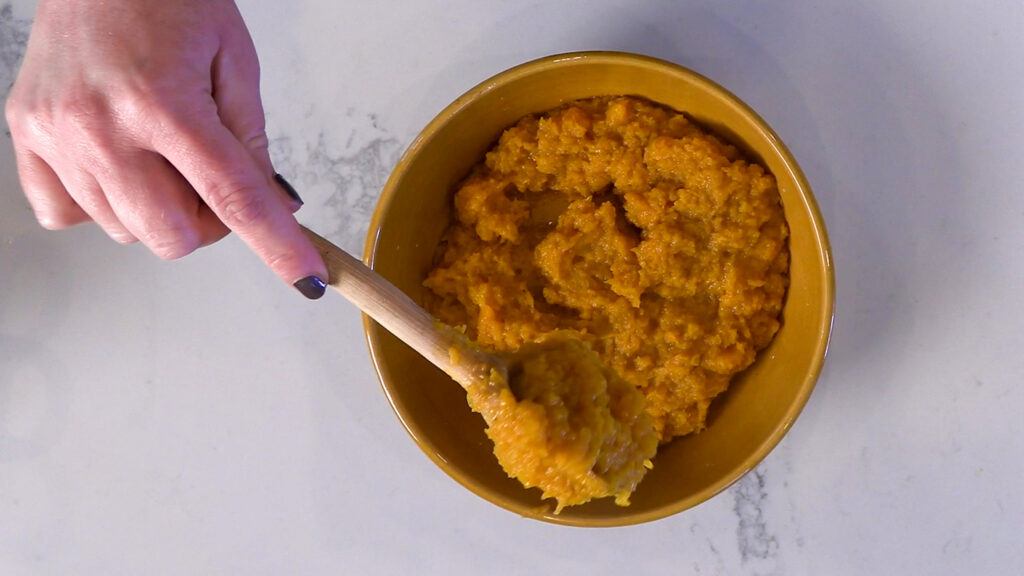
Directions:
- Add the chunks of squash and water into a medium pot. Bring to boil and then turn down to low and simmer covered.
- Stir occasionally, and as pieces soften use your spoon to help break squash apart. If squash seems like it is sticking to the bottom of pot or in danger or burning, add more water as needed. Continue to simmer covered on low heat until squash is entirely softened and broken down, and water is evaporated, about 45 minutes.
- Add spices, salt, vinegar and butter and stir to combine. Cook uncovered until butter is melted, about another 3-5 minutes. Serve warm.
Pancakes
“To make the best pancake, take two or three eggs and break them into a dish, and beat them well; then add unto them a pretty quantity of fair running water. And beat all well together; then put in cloves, mace, cinnamon, and nutmeg, and season it with salt; which one, make it as thick as you think good with fine wheat flour; then fry the cakes as thin as may be with sweet butter, or sweet seam, and make them brown, and so serve them with sugar strewed upon them. There be some which mix pancakes with new milk or cream, but that makes them tough, cloying, and not crisp, pleasant and savoury as running water.”
– Gervase Markham, The English Housewife
Makes approximately 10 – 12 pancakes
Ingredients
- 6 large eggs
- 2 cups of water
- ½ teaspoon ground cloves
- ½ teaspoon ground mace
- 1 teaspoon cinnamon
- 1 teaspoon nutmeg
- 1 ½ cup all purpose flour
- 1 ½ teaspoon kosher salt
- 4 tablespoons unsalted butter
- Sugar to taste
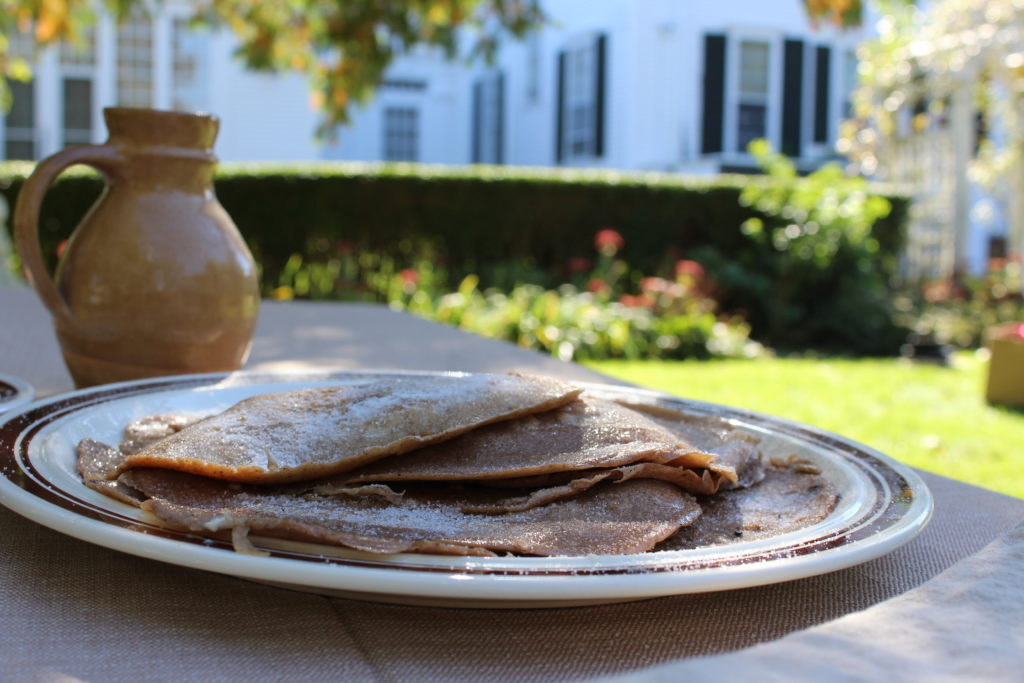
- Break eggs into a bowl, add the water and beat together.
- Add to the bowl the spices, flour, and salt. Whisk everything to combine.
- Warm a cast-iron or nonstick frying pan on medium heat. Melt enough butter to cover the bottom of the pan (about ½ tablespoon). Save the rest of the butter to use as you fry the pancakes, adding butter to the pan as needed.
- Pour about ⅓ cup of batter into the pan evenly. Cook until the pancake’s edges are set and a spatula can go under the pancake easily without any sticking ( about 2-4 minutes).
- Flip the pancake. Cook for another 2-4 minutes, until the edges begin to curl and some bubbles appear.
- Transfer to a plate and while the pancake is still warm, sprinkle with sugar.
- Repeat until the batter is gone. Watch the temperature of your pan and lower the heat as needed to avoid burning the pancakes.
Corn, Wheat, and Rye Bread
“There is also very good Bread made of it [maize], by mixing half, or a third parte, more or less of Ry or Wheate-Meale, or Flower amongst it, and then they make it up into Loaves, adding Leaven or yeast to it to make it Rise.”
– Letter of John Winthrop, July 29, 1662
Makes two approximately 6 inch round loaves.
Ingredients
- 2 cups water
- 1 cup lukewarm beer
- 4 teaspoons dry yeast
- 1/2 teaspoon sugar
- 4 cups all purpose flour, plus more for kneading
- 2 cups rye flour
- 2 cups corn flour
- 1 ½ tablespoons kosher salt
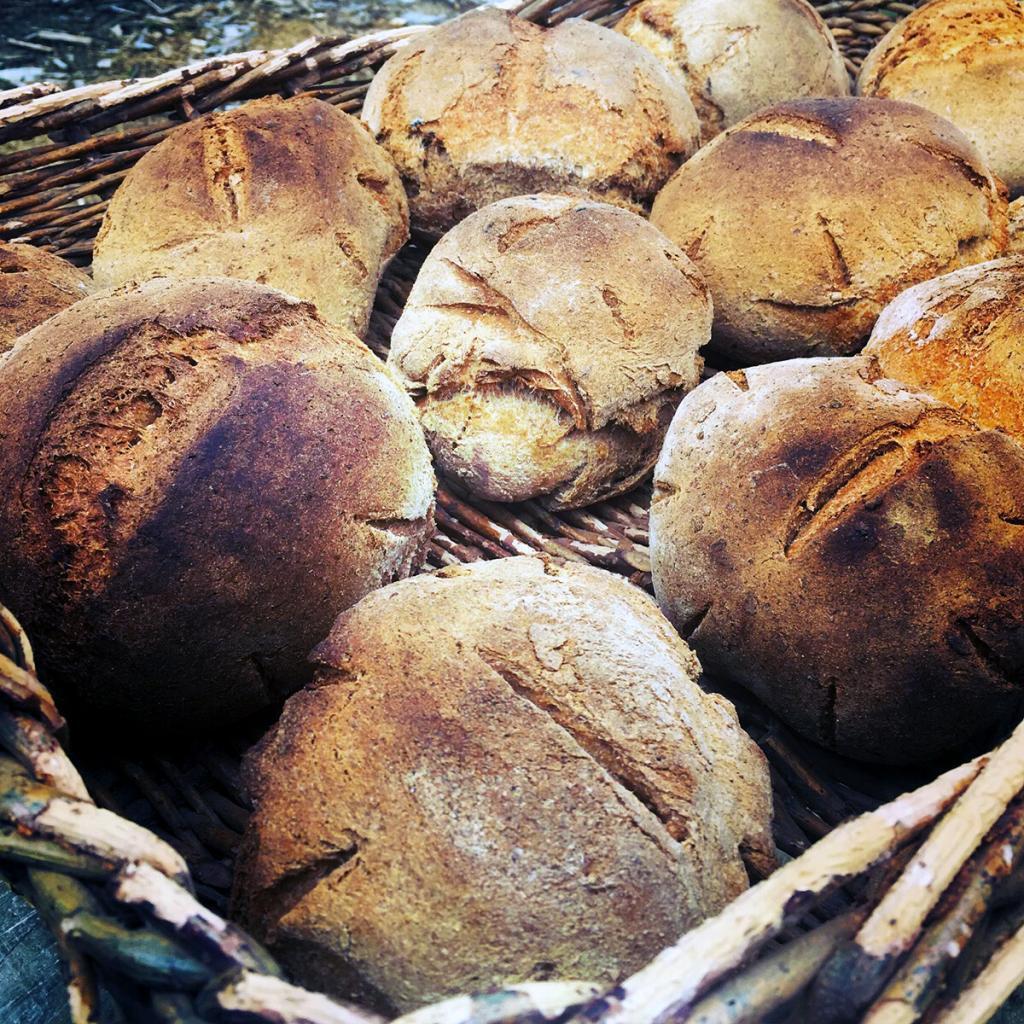
To make the starter:
- In a large bowl whisk together the beer, water, sugar and yeast. Allow the yeast to bloom for several minutes, until it starts to foam.
- Into the yeast mixture, stir in half of each of the flours: 2 cups all purpose, 1 cup rye, and 1 cup corn. Mix until a thick batter forms.
- Cover the bowl tightly with plastic wrap, and set in a warm place to proof. Ideally, for best results, allow the starter to proof overnight. But if you’re in a hurry, you can allow the starter to proof for as little as an hour.
To make the dough and bake:
- Once your starter has proofed, stir in the remainder of the flours and the salt. Add in the flours by the handful and mix till combined. Do the same with the salt. When the dough becomes too thick to continue mixing with a spoon, use your hands to finish bringing it together into a cohesive dough. If the dough seems too dry, add in a few drops of water as needed.
- Transfer the dough from the bowl to a floured work surface. The dough will be stiff, but continue to knead until smooth.
- When the dough is no longer sticky, gently poke it with your finger. If the dough shows a slight indent, but still bounces back some, it’s ready. Put the dough in a clean bowl, and cover with plastic wrap. Let the dough rise for one hour.
- After the dough has risen, uncover it and firmly punch it back towards the bottom of the bowl.
- Recover the dough, and allow it to rise for another 45 minutes.
- Turn the dough back out onto your floured surface. Divide the dough in half, and then fashion each half into a smooth, round loaf about 6 inches across. Place the loaves on an ungreased baking sheet, keeping at least several inches distance between them so they are not touching.
- Allow the loaves to rest while you preheat the oven to 400 degrees. Immediately before you put the loaves in the oven, quickly prick each of them several times with a knife on the top. The pricks shouldn’t be too deep or too large, otherwise your loaves will split open as they bake.
- Place the baking sheet with the loaves on the middle rack of your oven. Bake the loaves for about an hour to an hour and 10 minutes, or until they are a light golden brown. You can test the doneness of your loaves by knocking on the bottom – when finished, they will make a hollow sound. Transfer the loaves to a rack and allow them to cool completely.
A Sop of Onions
“Take and slice your Onions, & put them in a frying panne with a dish or two of sweete butter, and frie them together, then take a little faire water and put into it salt and peper, and so frie them together a little more, then boile them in a lyttle Earthen pot, putting to it a lyttle water and sweet butter, & c. You may use Spinanage in like maner.”
– Thomas Dawson, The Second Part of the Good Hus-wives Jewell, 1597
Makes 6 servings.
Ingredients
- 4 medium yellow onions
- 5 tablespoons salted butter
- 2 cups water
- 6 slices of crusty bread
- Salt and pepper to taste
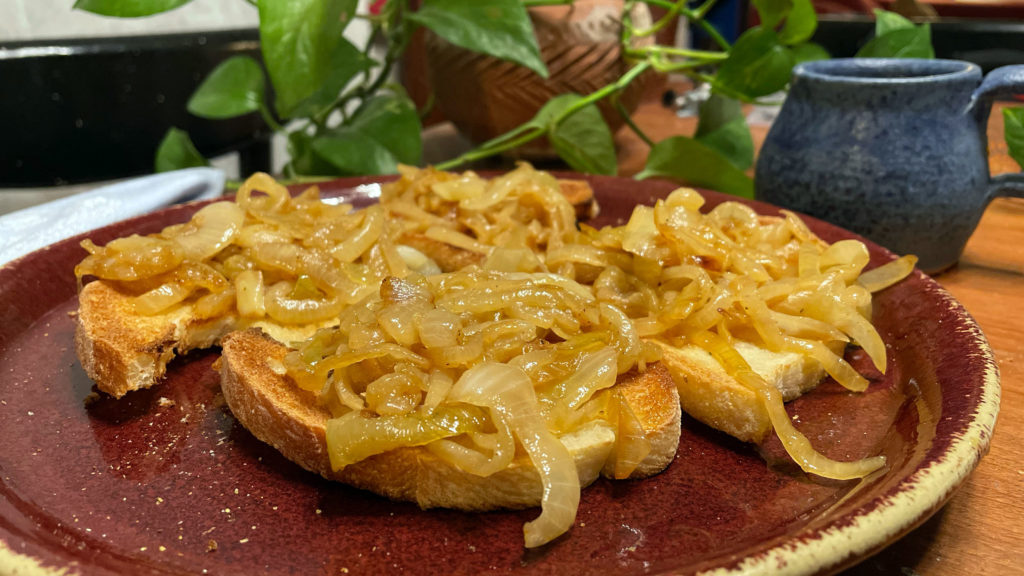
- Remove the skin from your onions, and then thinly slice them into rounds.
- In a deep frying pan (cast iron works best), melt 3 tablespoons of the butter on low heat. Once the butter is melted, add the sliced onions and a pinch of salt.
- Continue cooking the onions on low heat for about 15-20 minutes, stirring them occasionally. Be patient – you want to cook the onions slowly until they soften fully and turn a golden color.
- Once the onions have caramelized, add the water to the pan, scraping to remove any bits stuck to the bottom.
- Simmer the onions and water on low heat for another 15 minutes, or until the liquid is reduced. The onion mixture should have thickened and become more sauce-like. Finish the mixture by adding in 1 tablespoon of the butter, and salt and pepper as desired.
- While the onions simmer, make toasts in another frying pan. Melt half the remaining tablespoon of butter in the frying pan over medium heat, making sure the butter covers the whole bottom of the pan. Add 3 slices of bread and fry until crisp and golden brown, several minutes on each side. Depending on the size of your frying pan, you will probably need to make the toasts in batches – so once the first 3 slices are fried, remove them from the pan. Melt the remaining butter in the pan and repeat the process to toast all slices of bread.
- Transfer all the toasts to a plate and pour the onions over the bread. You can eat the sops of onions alone, or top them with the meat of your choice.
History
Learn about the history of Thanksgiving from 1621 to 2021
Activities / Games
17th century pastimes to try at home this Thanksgiving
